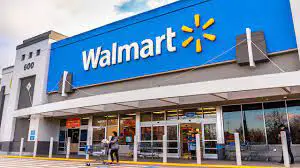As a cost leader, Walmart is one of the primary strategies Walmart uses to ensure that it remains competitive. They lower the cost of their products to remain competitive. To attract more customers and keep a favourable market position, they keep their prices low in an attempt to attract more customers. Low product differentiation is a hallmark of cost leadership. Walmart Inc. is known for offering low prices as a selling point for its retail services, which makes Walmart Inc.’s retail services redundant and, therefore, difficult to differentiate from retail services that are offered by other firms. The generic approach also involves a low level of market segmentation, since a generic strategy is a generic approach. In this article we know about Walmart cost leadership strategy.

What is a cost leadership strategy:
Cost leadership is gaining a competitive edge by having the lowest running costs on the market. To achieve cost leadership, organizations must demonstrate effectiveness, scalability, structure, ambition, and accumulated expertise. There are increasing numbers of businesses that combine two or more of these successful characteristics. For instance, you can be a premium price leader, or you can be innovative in the way you use marketing. The Walmart approach to cost-cutting has enabled it to achieve global success. Its strategy includes premium pricing, excellent customer service, and product excellence. In all stages of manufacturing, the company has reduced waste, allowing it to offer consumers high-quality goods at affordable prices. Walmart cost leadership strategy- let’s know.
The Walmart Cost leadership strategy
In 1962, Sam Walton opened the first Walmart store in Rogers, Arkansas. Sales topped $1 billion after seventeen years. With $218 billion in sales, Wal-Mart Companies, Inc. was indeed the world’s leading manufacturer. Walmart’s U.S. success was to sell branded goods at reasonable prices. Wal-Mart shops are visited by 100 million people worldwide every week. The business has over 3,200 stores in the United States and far more than 1,100 in Mexico, Costa Rica, Ontario, Argentina, Brazil, China, Korea, Germany, and the United Kingdom. Wal-Mart ranked ninth in PricewaterhouseCoopers’ and Forbes’ 2001 rankings of best-regarded businesses. Following that, Wal-Mart was named the top one company in the Forbes 500 and was awarded the Ron Browns Honor for Business Excellence, a presidential medal that recognized companies for excellence in worker and community engagement.
Wal-Mart dominated the bargain retail business with a 50% market share. About 3,000 vendors participated, such as Procter & Gamble, Clorox, and Johnson & Johnson. Despite being the largest client for consumer goods manufacturers, Wal-Mart has made a conscious effort not to become overly dependent on any one company; no single vendor accounts for more than 4 per cent of Wal-Mart’s total purchases. 85 per cent of Wal-Mart’s products are delivered through its distribution system. Opponents’ regional warehouses supplied less than half the product to its store outlets. In addition to vehicles, the company has over 12,000 trailers. Wal-Mart implemented a wireless communication system that enables intelligence to be exchanged across the industry’s vast network of stores, distribution centres, and providers. The company could purchase larger shipments without incurring storage costs due to the technology that aggregated customer demand.
Price Dominance and Cost leadership: A Comparisom
Two marketing techniques that are sometimes misunderstood are price dominance and cost leadership. Pricing leadership, for example, means a company has lower prices. Meanwhile, cost leadership means a company has lower operating costs. Price reduction is not an inevitable consequence of cost leadership.
- Dominant pricing: A company with a dominant pricing policy operates at a lower or lower price. The company’s manufacturing costs do not also reduce in this way. However, the company may have thin profit margins for its items. To gain maximum market penetration; businesses may offer their products below break-even or even at a loss. Leading retailers, such as online retailers, take a price-driven approach. They often operate at lower prices with lower profit margins to gain the largest share of the market. Businesses with higher sales volume increase profits. Thus, instead of being cost leaders, they are pricing leaders.
- Leadership in Costs. Manufacturing or long-term value creation is minimized in a company that is cost-leadership. Even market-competitive pricing may be possible. This means that the firm charges the same price as its counterparts, indicating that it makes a lot of money at comparable market pricing. Cost leadership has the greatest impact when combined with price leadership. Cost leadership is common in price-driven markets. It is, however, possible for firms to attain minimal operating expenses and offer their products at lower prices.
Accessing Cost leadership
A cost leadership approach is not as simple as it seems. Nothing is unthinkable, however. According to our definition, cost leadership is focused on reducing manufacturing or operating costs.
- Reduced costs can be achieved through large-scale production. There are two types of expenses:
- Salaries, property taxes, insurance, depreciation, and building rent are constant costs.
- Direct labour costs, utility costs, materials costs, etc.
An increasing industry’s output can reduce a company’s fixed expenses. No matter how much is produced, the building’s rental, real estate tax, administrator, director, and many others’ wages will remain constant. Lowering fixed costs is a fantastic way to lower production costs. Further, technical improvements might help optimize manufacturing
Conclusion:
In the presented article we discussed the ideology which Walmart opted for the most cost-efficient firm for its consumers. Also, we looked upon WAYS TO ACHIEVE COST LEADERSHIP STRATEGY, DIFFERENCE BETWEEN COST LEADERSHIP AND PRICE DOMINANCE, and also WHAT IS A COST LEADERSHIP STRATEGY.
- Frequently asked questions:
- What makes Walmart a cost leader?
Low product differentiation means cost leadership. The retail services Walmart Inc. provides are similar to other companies in the industry, with a focus on low prices as its selling point. Consequently, it does not segment its market well.
